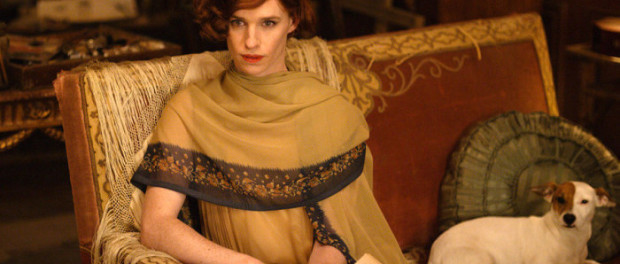Review: The Danish Girl
This is a tough subject to make and for that I give full credit to director Tom Hooper, who weaved a classic-ish style narrative to this tender and emotional tale. Inspired by the book written about the diaries of 1920’s Danish artist Lili Elbe, The Danish Girl traces the story of Danish landscape artist Einar Wegener and his wife Gerda Wegener.
The husband and wife duo work together and while Einar is more celebrated of the two and Gerda is still finding her feet, they share an unusual camaraderie that even when a prestigious Copenhagen gallery tells Gerda that she has talent but still needs the right subject, she is not threatened by the dominant husband artist in Einar. One day when a dancer friend is late for a session to pose, Gerda asks Einar to put on some stockings and sandals, because her painting is already long overdue. Einar is quite reluctant and hesitates, but as soon as Gerda hands him a dress, which he merely holds over his dapper suit, it’s as if something changes. The pivot of their lives does a one-eight, never to be turned back. This moment in the film though subdued, is quite powerful as Einar sits holding the dress and runs their finger down its side, feeling what is innate to them. Their lifelong identification as Lili is literally unraveled, something that apparently Einar had been suppressing since they were a young boy and their father walked in on them kissing another boy, while they were wearing their grandmother’s apron.

Vikander in The Danish Girl
Set in the 1920s Copenhagen, the film is laced with classical, aristocratic visuals, where the ‘common touch’ is completely absent. The lives that the Wegener’s live and the world they inhabit are completely cut off from the perils of everyday living. While this maybe true to their station in life, it does add a clinical sensibility to their story, the emotional journeys they traverse as well as the transition of Einar to Lili.
While Gerda imagined Lili to be a one-off thing that Einar did as a favor to her, Lili becomes more frequent and Einar more uncomfortable with continuing to be Einar. They continue to present more frequently as Lili, though fearful of society, they seem to switch to the role of Lili with more certitude and begin inhabiting their home with Gerda.

The Danish Girl
Eddy Redmayne is remarkable from the first moment you set eyes on him playing Einar, as he looks across the room at his wife. From that moment I wondered every time I saw his eyes on screen, as if the lines between Einar and Lili were completely blurred; that’s the brilliance of this actor. Not taking any credit away from the thoroughly phenomenal performance by Redmayne, but the hidden jewel of the film is Alicia Vikander (playing Gerda). The graceful strength and emotional turmoil that the actor demonstrates throughout the film is remarkable. While her role is relegated to Redmayne’s supportive, sometimes doubtful, but mostly supportive wife, Vikandar always had me wondering what her life was like, what she was feeling, where was she in all this? At one point when asking Lili that she wants her husband back and that she wants to talk to him and hold him, she blurts it out on Lili’s face that ‘not everything is always about you’. The unspoken tragedy of Gerda’s love is the foundation of The Danish Girl.
Now for the problems that this film was obviously going to be laden with: the choice of Redmayne to play a trans character in a film like this is a shameful reflection of how casting works in the industry. And this has nothing to do with Redmayne personally, as I admire and respect his work greatly. But a cisgender person playing Einar/Lili is problematic. Also, though I confess not having explored the book that accounts Lili’s diaries, I find it fascinating that Tom Hooper only glances at Gerda’s continued infatuation with Lili’s form, which becomes the consistent subject matter of her work. No matter how much Gerda may have been responding to market forces, she was immersed in capturing all aspects of Lili. More so she continued to do so much after Lili was gone. This was never questioned, talked about or explored.

The Danish Girl
Lastly, I go back to the clinical nature of the entire film. While brutality and the harsh realities of a trans person’s life are not a must have in such (or similar) representations, but the glamorized, bourgeois lens through which we encounter these characters negates (perhaps completely) the real life struggles that trans people face even today, let alone in the 1920s.
Notwithstanding the above, I connected with the film and appreciate it making to the screen after over ten years of looking for actors, producers. The narrative lost some fluidity between the Gerda-Einar relationship and Einar’s struggles with finding a ‘cure’ and was quite often patchy. I must also note here that another one of my favorite budding actors Ben Winshaw is completely wasted here and is risking being typecast.
The Danish Girl was thought provoking and emotionally affecting, for every time I see us loose our humanity for the falsity that is ‘normativity’, it leaves me wondering.
The Danish Girl is in cinemas now. Click HERE for tickets.






